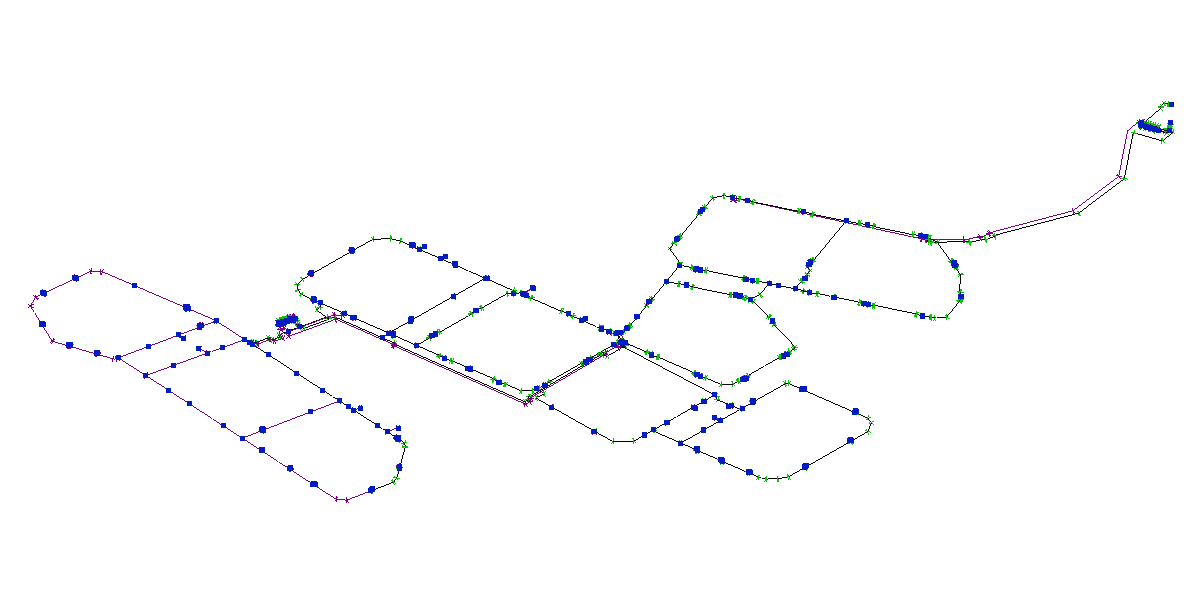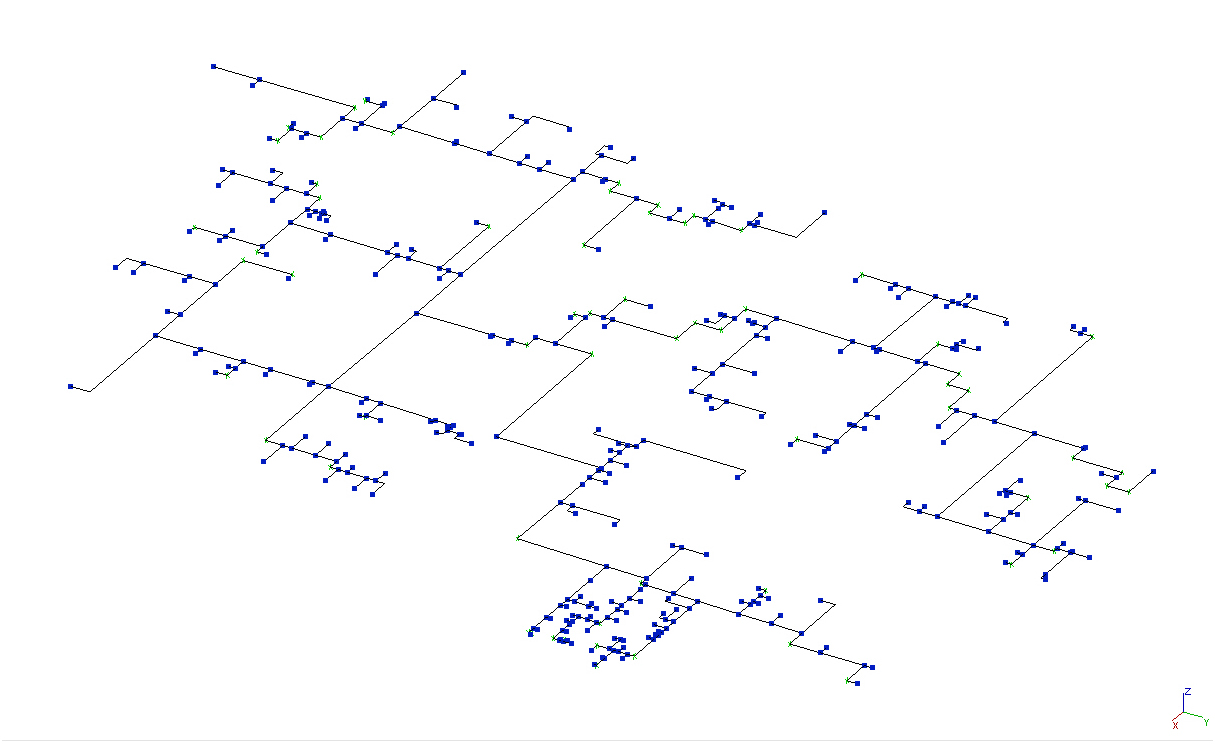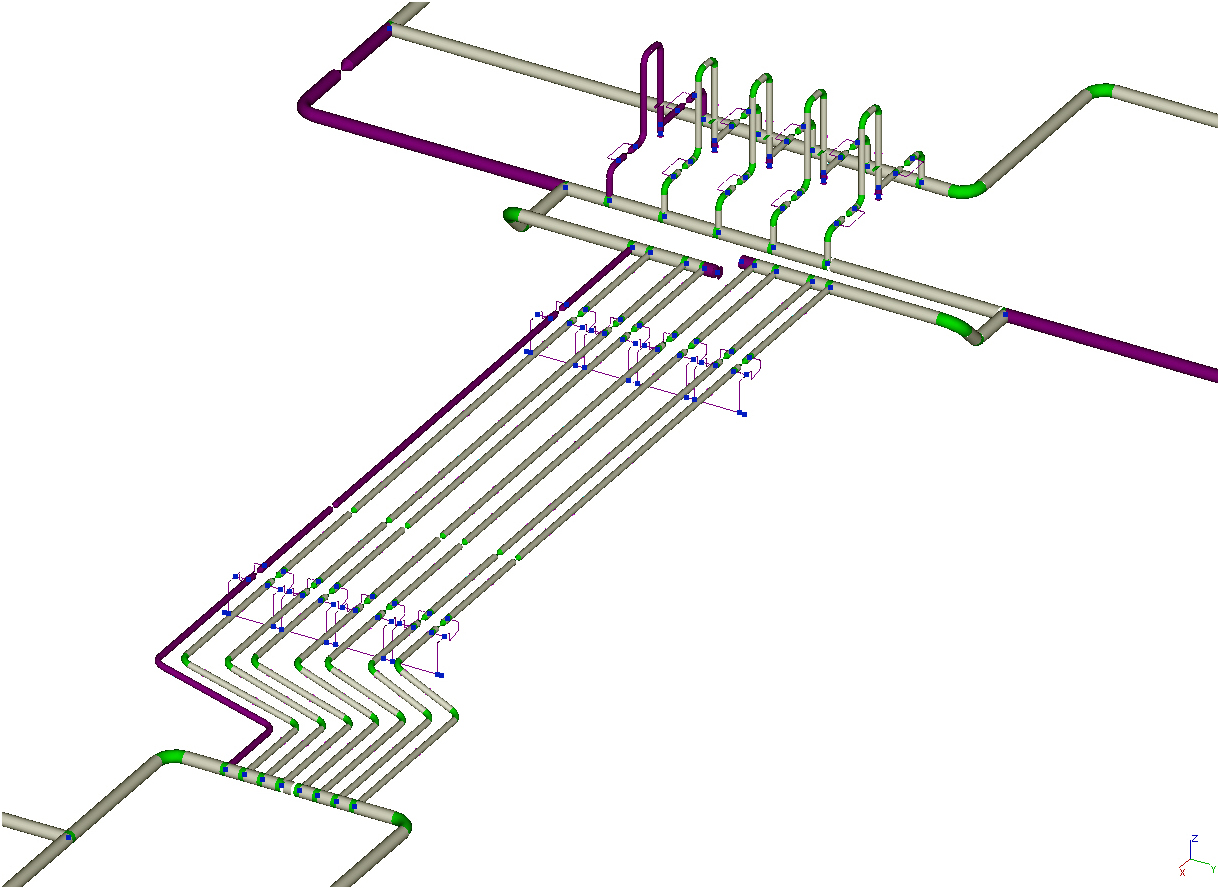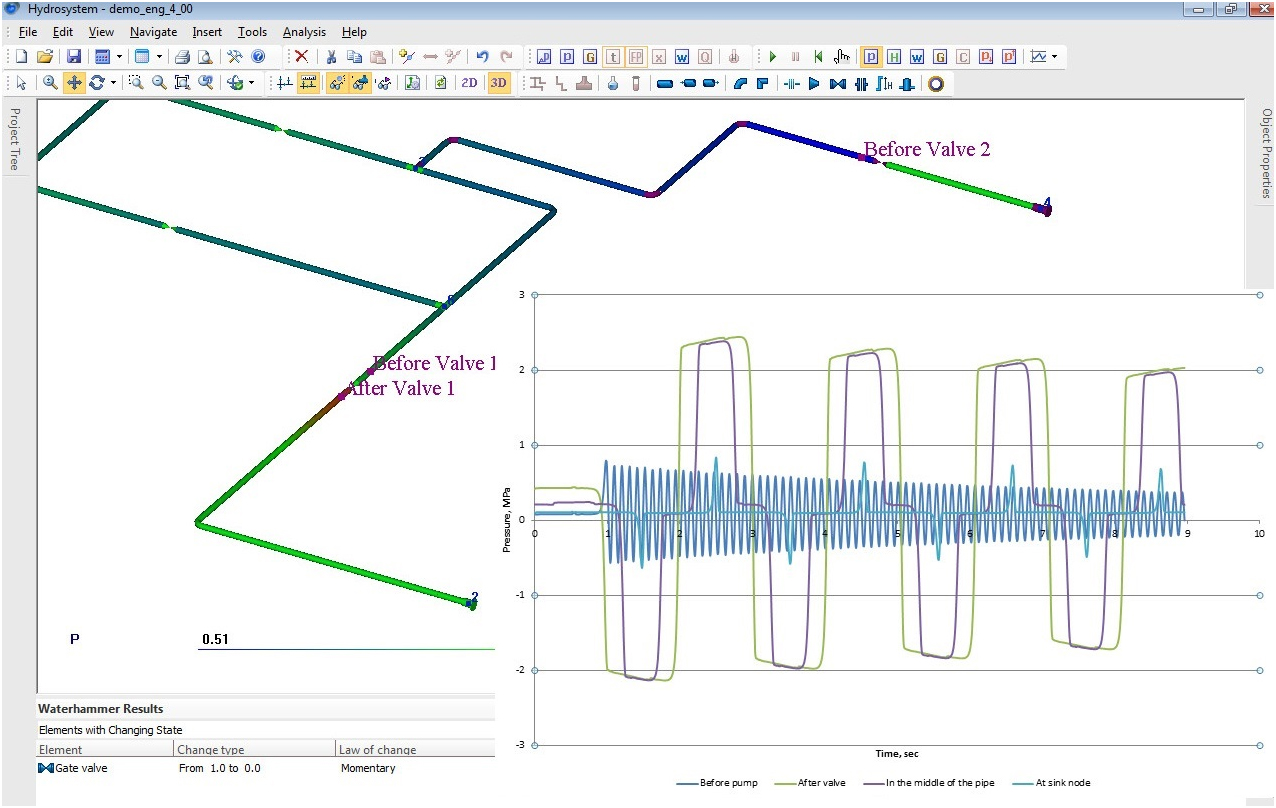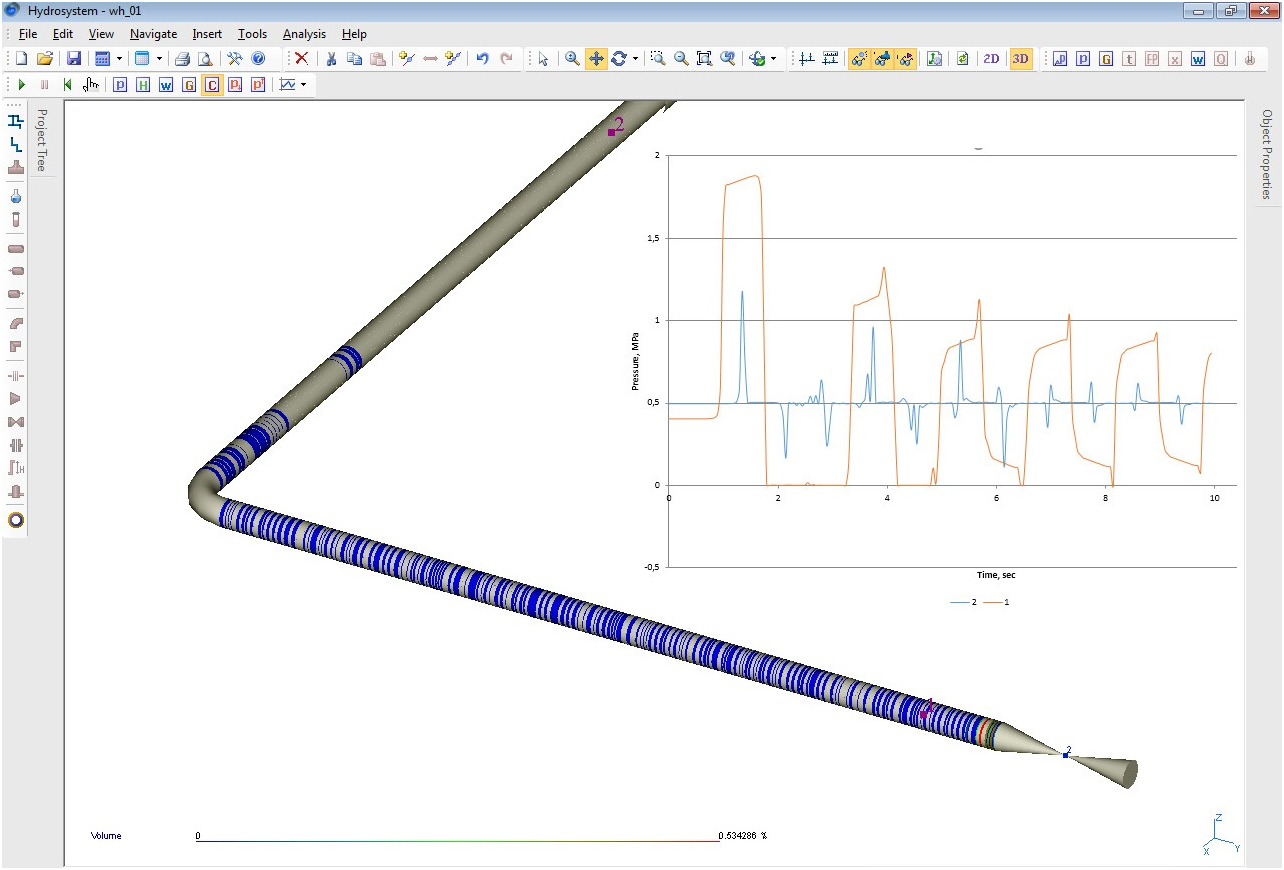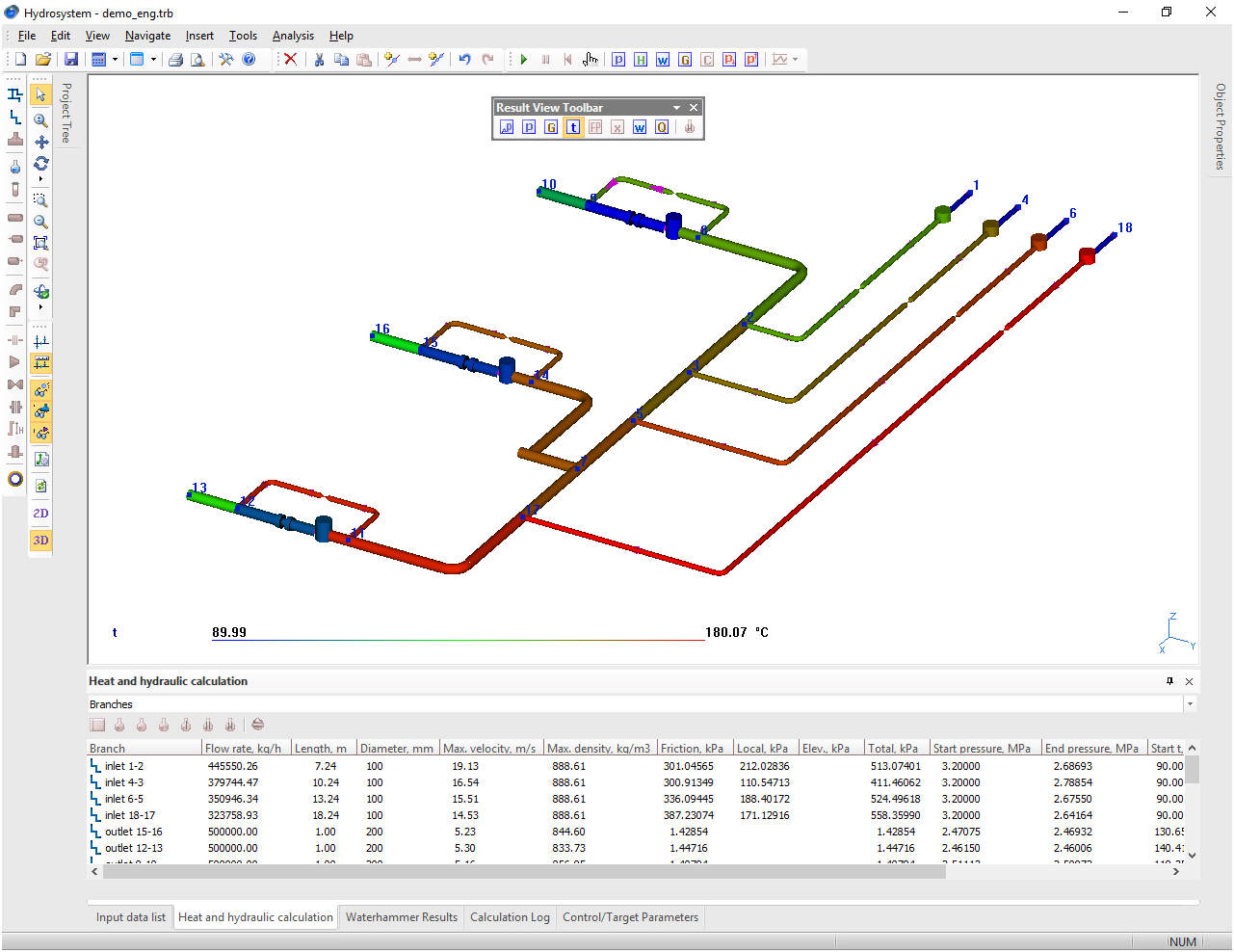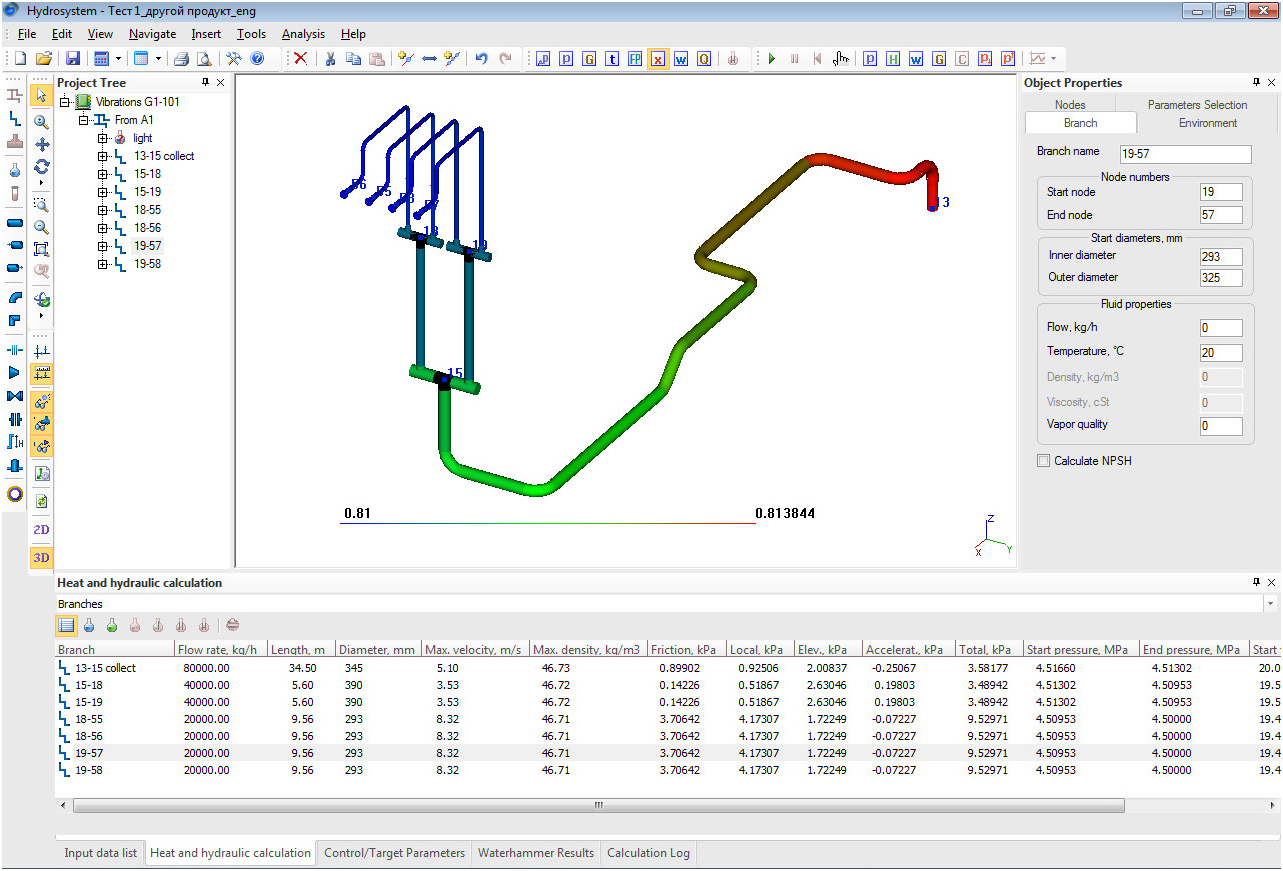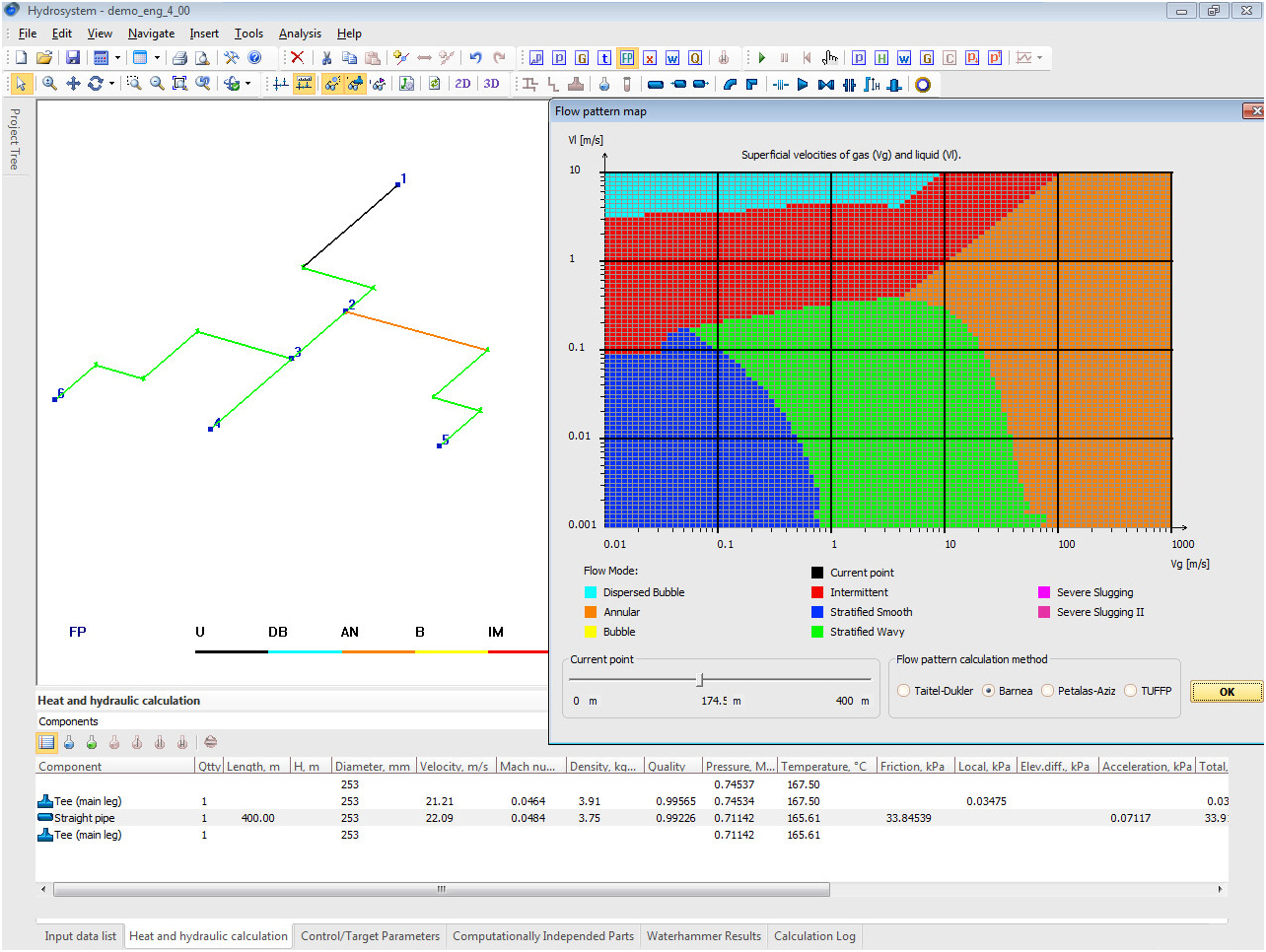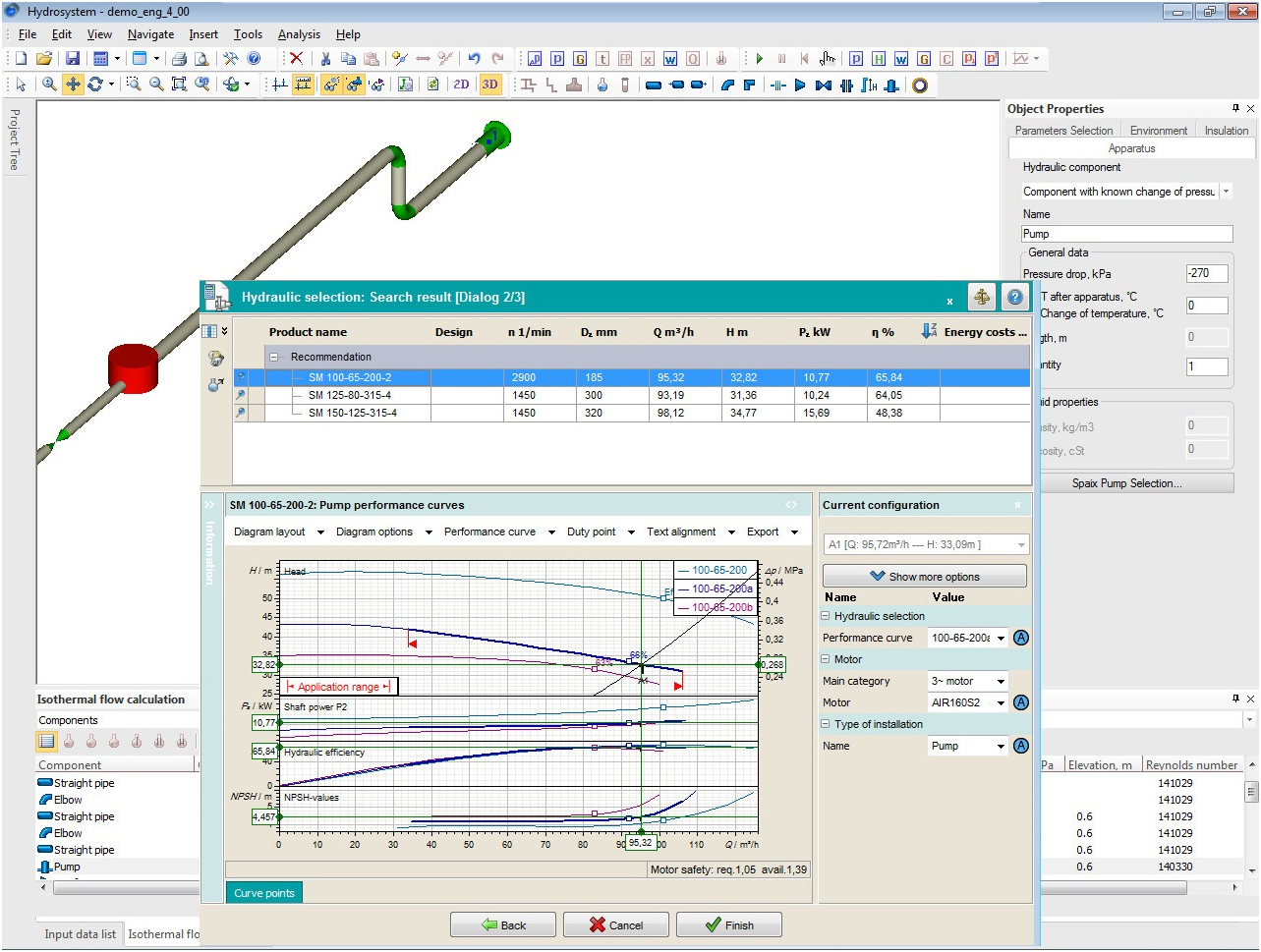Overview
First introduced in 1977 and blessed by piping hydraulic world-known guru Idelchik, PASS/HYDROSYSTEM has since evolved into one of most powerful piping flow analysis tools.
PASS/HYDROSYSTEM provides diameter selection, heat and hydraulic analysis of steady state flow for real liquids, gases, and multiphase mixtures (including gas/liquid, oil/water, and gas/oil/water flow considering flashing and condensation), in piping systems of any complexity, including networks with loops.
It also covers the most dangerous type of transitional flow related to liquid surge (water-hammer), and flow assurance calculations, including severe slugging, and gas hydrate formation prediction.
PASS/HYDROSYSTEM combines sophisticated calculation capabilities with ease-of-use to deliver fluid flow and heat transfer simulation and sizing of any piping network in any design stage by “regular” engineers and designers. Process and piping engineers of more than 600 companies use the software now every day.
New employees can begin performing piping hydraulic and thermal analysis in days.
Pipelines analyzed include:
- Process piping systems at plants, storage facilities, pumping, and compressor stations;
- Plant utility piping systems such as steam, water, compressed air, inert gases, fuel, refrigerants, and others;
- Piping in mechanical industries such as aerospace, ship building, boiler, turbines, and more;
- Oil and gas upstream and midstream pipelines;
- Outdoor piping networks including district heating, water, and gas distribution;
- Other piping networks.
Extensive analysis capabilities, along with integration with popular CAD tools and within the PASS suite, makes PASS/HYDROSYSTEM an ideal component for any piping system design workflow
Features and Advantages
To analyze a piping system for hydraulic and thermal effects it is necessary to simulate its behavior on three scale levels: pipe cross section, pipe/branch run, and the whole piping network – and then link and solve these models together.
At the cross-sectional scale it is necessary to define the type of fluid flow (laminar, turbulent, choked, or subsonic, flow pattern for multiphase flow – stratified, annular, intermitted, etc.), and the specifics of heat exchange between fluid and environment through pipe wall and thermal insulation. This knowledge is then used when calculating integral parameters of the flow and heat exchange (pressure gradient, heat losses per length, etc.) and following up how all fluid parameters change along the pipe/branch and all over the network. This would be impossible without access to most reliable thermodynamic data provided by software.
PASS/HYDROSYSTEM provides a calculation engine for all necessary fluid properties and phase equilibrium on the base of fluid composition, for a wide spectrum of fluids and applications.
- The proprietary Properties library provides quick property calculation of ~150 most often used organic and non-organic components and their mixtures.
- The proprietary STARS library is focused on applications in the refining and petrochemical industry and allows for calculation of properties for individual fluid components, oil fractions and their mixtures in liquid and gas phases. This database contains more than 1600 components. STARS can also automatically compute gas-liquid phase equilibrium and check the validity of fluid phase entered.
- The GERG-2008 library allows calculation of natural gas thermodynamic properties and gas-liquid phase equilibrium based on the popular GERG-2008 equation of state.
- The WaterSteamPro module provides accurate calculations of water and steam fluid properties on the basis of IAPWS-IF97 equations.
For more advanced fluid properties and phase equilibrium calculations the program can use the Simulis Thermodynamics library by ProSim S.A.. This library covers Oil and Gas, Chemical, Biochemical, and other industries and provides a wide range of modern methods of physical properties, gas-liquid, and liquid-liquid phase equilibrium calculation for mixtures of more than 3000 compounds and oil fractions.
For hydrate formation prediction the program can use the Hydrate Open Structure module of the PVTSim library by Calsep, which can be purchased as a separate product.
PASS/HYDROSYSTEM uses the most advanced models/algorithms and libraries for all level of simulation (both proprietary and from the most famous researchers/ developers from all over the world).
This includes minor loss correlations by Idelchik, Miller, Ito; multiphase flow models by Chisholm, Friedel; drift-flux model, mechanistic models by Taitel, Barnea and Tulsa University Fluid Flow Project research group (with automatic closure relations selection); Settling slurry flow DHLLDV framework model by Delft University of Technology; Todini Global Gradient Algorithm for network solver; Powell derivative-free method for optimization; and many others.
The program also calculates very complex networks with flow rate control elements and helps users analyze those networks with visual topology analysis features.
Slug flow parameters (size, frequency, speed of slugs, etc.) for gas-liquid flow can be calculated and reported using TUFFP Unified model. Forces in elbows and flow-turns caused by gas-liquid slug flow are calculated and can be exported to PASS/START-PROF software for accounting them in piping stress analysis.
The PASS/ADD SURGE module implements the classical method of characteristics (MOC), using Riemann invariants and explicit numerical methods. It also considers possible cavitation during transitional flow, taking into account both, column separation effect and distributed vaporous cavitation. Unbalanced waterhammer induced forces on appropriate elements/nodes are calculated and transferred to PASS/START-PROF or other piping stress analysis programs.
User interface
PASS/HYDROSYSTEM can work with a large spectrum of pipeline types on different stages of design and offers unique multi-variant graphical representations of the model. The program can switch between different modes and level of detail (PFD/P&ID – like unscaled scheme with regulated level of detailing, 2D scaled distributed networks on background map, and single line or solid 3D scaled, or unscaled representation for process piping) depending on what is suitable for a specific design phase and pipeline type.
The results can be viewed as color maps, animations (for surge calculation), easy-to-analyze tables, as well as user-customizable reports in PDF, MS Word, MS Excel, and other formats.
Centrifugal pump selection
PASS/HYDROSYSTEM delivers a unique feature for customers who need to select pumps for their piping systems. The seamless integration with famous Spaix software (by our partner VSX – VOGEL SOFTWARE GmbH, Germany) allows forwarding of all necessary data (duty point data, fluid properties, restriction on NPSH) to Spaix with the push of a button. The user then selects the optimal pump (with all optimization features – impeller trimming, changing the rotation speed, changing blade angle of propeller pumps etc.) and forwards all of the selected pump’s performance curves back to PASS/HYDROSYSTEM for final calculation. The lite (Quick & Easy) version of Spaix is available free of charge along with PASS/HYDROSYSTEM.
System Requirements
Integration
PASS/HYDROSYSTEM has interfaces with following design and analysis software:
| Software | Import into PASS/HYDROSYSTEM | Export from PASS/HYDROSYSTEM |
|---|---|---|
Configurations
PASS/HYDROSYSTEM can be delivered in different configurations to evaluate the piping pressure and thermal effects.
PASS/HYDROSYSTEM Complete
provides comprehensive hydraulic and thermal analysis and related sizing calculations for piping systems of any complexity.
PASS/HYDROSYSTEM Pressure&Heat
provides simulation and sizing of any piping network for single phase steady state flow and thermal conditions.
PASS/HYDROSYSTEM Pressure
provides simulation and sizing of any piping network for pressure effects related to single phase steady state flow conditions.
The PASS/ADD Multiphase module provides analysis of multi-phase flow in piping systems.
The PASS/ADD Surge module provides analysis of liquid transient flow in piping systems.
The PASS/ADD Solid Phase module provides analysis of settling slurry flow.
Download Software
| Software | Link | Upload Date |
|---|---|---|
| PASS/HYDROSYSTEM 4.6 R2 (English) | request |
25.06.2024 |
| PASS/HYDROSYSTEM 4.5 R3 (English) | request |
12.12.2023 |
| PASS/HYDROSYSTEM Viewer 4.6 (English) | request |
18.06.2024 |
| PASS/HYDROSYSTEM Viewer 4.5 (English) | request |
12.12.2023 |
| LMS (Sentinel HL and Guardant) Tools (only for PASS/NOZZLE-FEM 3.5, PASS/HYDROSYSTEM 4.6 and PASS/EQUIP 3.7) | ||
| Dongle Update Tool (KeySt) for Guardant and Sentinel HL | zip, 16.76 MiB | 09.07.2024 |
| Drivers and network key manager for Sentinel HL dongles (Windows) | exe, 37.14 MiB | 12.12.2023 |
| Drivers for Guardant dongles | exe, 11.43 MiB | 24.12.2021 |
| SuperPro Tools | ||
| Dongle Update (KeySt) | zip, 4.13 MiB | 13.12.2023 |
| Dongle Drivers SafeNet Sentinel 7.6.9 | exe, 7.37 MiB | 13.12.2023 |
Resources
Videos
Supporting Materials
10 reasons to replace Flowmaster with PASS/HYDROSYSTEM
PASS/HYDROSYSTEM Datasheet 2020

